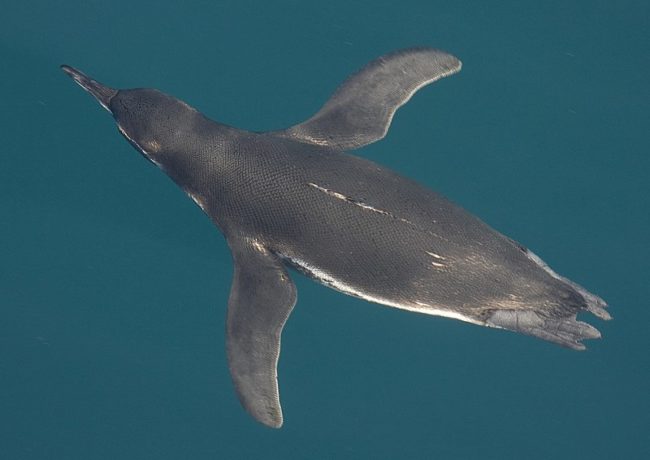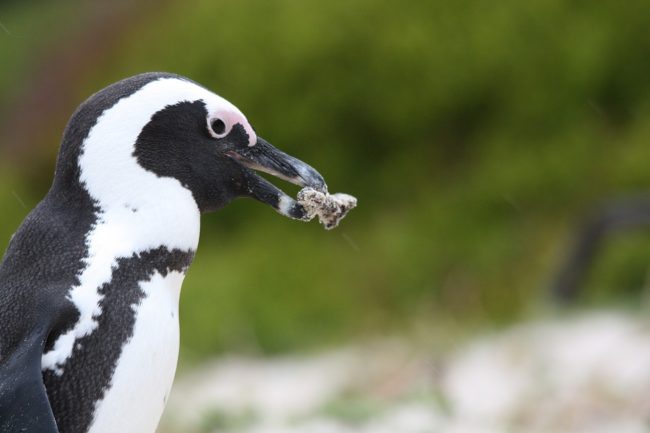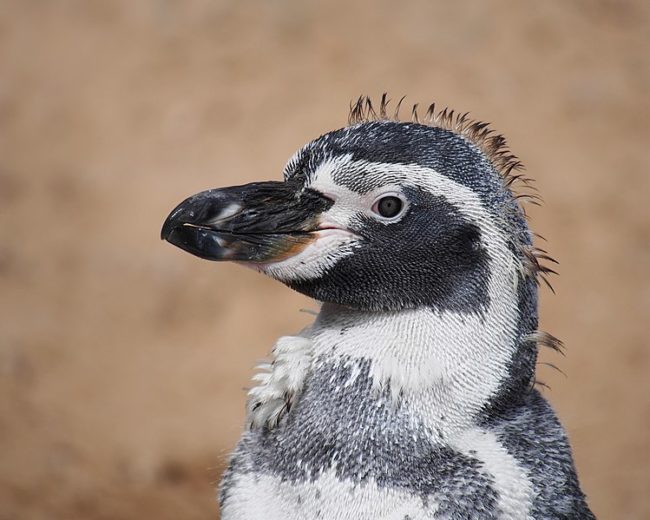Penguins are endearing and trendy birds, yet they can be picky eaters with a limited diet jeopardized by disreputable practices.
A greater understanding of when penguins eat can aid in the conservation and discussion of their food-rich environments and provide rehabilitators with more resources for satisfying these particular birds’ dietary needs.
Penguins are carnivore birds with piscivorous diets. They are dependent on the sea for all of their food and rely on clean, healthy water for nutrient-dense prey.
Penguins eat fish, krill, crabs, squid, and other seafood they catch while swimming. An active, medium-sized penguin would eat roughly two pounds of food per day in the summer but just a third of that amount in the winter.
Penguins’ diets, however, differ based on the species, individual penguins’ expertise, and their geographic region.
In moderate to tropical climes, fish is the principal dietary source for penguins. Those who live in the Antarctic continent’s frigid environment must rely primarily on krill, a microscopic crustacean abundant in the surrounding waters. Meanwhile, penguins living in the transition zones can eat fish, krill, and squid.
What and when the penguin eats is primarily determined by how hungry they are. Penguins eat every day in the summer to save nutrients for the winter. As they hunt every day, they can take up to 2 pounds of food a day, the average penguin diet.
To better understand when penguins eat, we’ve written an entire article on it. It assists you in providing a better understanding of penguins.
Today, we are going to dive deep and understand – " What are the typical diets of penguins? When do penguins collect their food? And much more " Are you ready? Let’s go!
When do penguins collect their food?
Penguins feed in the sea, with most of their food collected throughout the summer.
The majority of penguins look for food between 15.3 and 18.3 meters deep. The location of prey might alter seasonally and even daily.
When it comes to hunting, penguins rely primarily on their vision, how penguins discover prey in the dark, at night, or in extreme depths.
Many marine squids, crabs, and fish have bioluminescence (light-producing) abilities, which some experts believe may aid penguins.
Penguins grab prey with their beaks and swallow it on the whole while swimming. To catch slippery prey, penguins have a forked tongue and powerful jaws.

Galapagos penguins stay along the water’s edge for more extended periods
The Galapagos penguin is known to hunt with a variety of seabirds, including flightless cormorants (Campsohaelius harrisi, formerly Nannopterum harrisi), brown pelicans (Pelecanus occidentalis), brown noddy-birds (Anous stolidus), blue-footed (Sula nebouxii), and masked boobies (Sula dactylatra (Puffinus lhenninieri).
In the field, we observed that hunter-divers like the Galapagos penguin and flightless cormorant stay along the water’s edge for more extended periods, extending how long the flocks last.
Field observations indicate that hunt-diver prey such as the Galapagos penguin and flightless cormorant force the animals to remain near the water’s edge and surface for more extended periods, thus increasing the duration of these flocks.
In pursuit of food, various species travel varying distances from the colony. Different species travel different distances from the colony in search of food.
For Instance - Adélies, hunting areas can be up to 15 kilometers (9 miles) from their territory and up to 900 kilometers (559 miles) for a king penguin. The emperor penguin may travel between 164 and 1,454 kilometers (102–903 miles) in a single trip.
Antarctic penguins walk, swim, and sled from feeding areas to rooks. Penguins will provide seal holes and other openings in the ice when fishing areas are too far apart.
What is the typical diet of penguins?
Since penguins are carnivores, their natural food varies according to their range, beak size, shape, foraging activity, and other aspects, but the following are the most common:
Fish: Most penguin diets consist of lanternfish, silverfish, sparts, sardines, opal fish, cod, and other tiny fish. For penguins to thrive, massive numbers of fish are required.
Crustaceans: Smaller penguins can eat a lot of krill, while other crustaceans like crabs and shrimp make up a modest component of particular penguins’ diets.
Cephalopods: Occasional cuttlefish and squid are a small portion of some penguins’ diets, significantly larger penguin species that can dive deeper in search of food.
Many penguins are opportunistic eaters and will sample a wide variety of different prey. They will adapt their feeding patterns to match what foods are most widely and readily available at other times of the year and in different parts of their range.
Is it true penguins swallow stones?
Penguins swallow small stones as well, but they do not digest them. Instead, stones assist them in digesting their food by grinding down the smaller pieces so that the penguin can digest their food.
Another theory is that stones make penguins feel less hungry when food is scarce or while molting and caring for their newborn young and unable to forage for food.
Rockhopper penguins also swallow the exoskeleton of crustaceans to aid in digestion which they eat.
The stomach of an emperor penguin contained 4.5 kg (10 lb) of stones. Penguins found to have rocks in their bellies include the African, Gentoo, Magellanic, and yellow-eyed penguins.
However, king, rockhopper, and macaroni penguins have been observed devouring enormous quantities of stones, occasionally on purpose. In neither of these situations were these stones swallowed by mistake.
While diving to lessen buoyancy, penguins may swallow the stones to reduce the sensation of hunger.

Penguins eating stone
Additionally, rockhopper and macaroni chicks consume stones to aid in the digestion of crustacean exoskeletons, which are an essential element of their diet.
King penguins mating on Marion Island goes out of their way to find healthy stones nearby. Each stone has a diameter of roughly 10mm to 30mm, chosen at a particular moment.
In one incident, a king penguin saw a boat, and then the penguin turned his head back and swallowed the stone. The king consumed an average of six to 24 stones per minute, with the other finishing 31 stones per minute.
When do penguins fast?
Penguins go through a fasting spell once a year. Penguins build up a thick layer of fat before fasting to supply energy.
During the breeding season, penguins fast for extended periods and do not leave their nesting grounds to feed. During courtship, nesting, and incubation, penguins eat quickly.
Penguins also fast throughout their molting seasons, both annual and yearly. The penguins’ fat coating keeps them active until the molt has stopped.
Chicks outgrow their juvenile plumage and transition to adult plumage. By this stage, the parents of the penguins’ offspring are usually not feeding them. Growth halts during this fasting period but restarts once the molt is over.
The length of time a penguin fast varies depending on the species, gender, and style of fasting.
For Instance - The emperor and king penguins have the most prolonged fasting periods. During courtship and the initial incubation shift, male king penguins can fast for 54 days.
Male Emperor Penguins Can Fast For 90 to 120 Days During Courtship, Breeding, and the Incubation Period. Male emperor penguins can fast for 90 to 120 days during courtship, breeding, and the entire incubation period.

Penguins molting
How much food do penguins consume?
Its species and the season determine a penguin’s food consumption. During fasting periods, especially in the winter, some birds may survive on significantly fewer meals, while others, such as male emperor penguins, may go without food completely to care for their eggs.
All penguins consume more food in the summer than in other months to gain weight and store enough fat for the brutal winter months. Adult emperor penguins need 2 to 5 kilograms per day, while smaller species need less.
Depending on the time of year, a penguin’s eating frequency may differ. Most penguins seek their prey daily. Hunting becomes more difficult for them during the winter with eggs to safeguard.
To protect their eggs, male penguins will not hunt at all. The male penguin often keeps an eye on the eggs while the female searches for food for months.
Instead, they protect their bodies from the fat that builds up over the summer. While waiting for his spouse to return, a male penguin could lose up to 45 percent of his body weight on average.
What are the feeding habits of penguins?
Penguins have several evolutionary advantages that enable them to be effective sea hunters. They have excellent underwater vision and swimming prowess, allowing them to dive deep and swiftly search for various fish and cephalopods.
Penguins can dive to incredible depths in search of food, and they can travel long distances from their nesting grounds to do so. The largest species, Emperor penguins, travel 300-500 km to hunt for several weeks.
Hunting strategies differ by species. For instance, many penguins hunt in small groups, whereas the yellow-eyed penguin hunts alone. Weather, ocean currents, and various other factors influence hunting patterns.
When penguins molt, they cannot forage or consume a large amount of food. They shed their plumage during molting, which protects them from the cold temperatures in the water and acts as insulation.
Penguins lose up to 55 percent of their total body weight during molting periods. As most penguins spend a lot of time hunting before and during their molting seasons, weight fluctuations are common.
Penguins swallow their prey on the whole and store it in the first chamber of their stomach. During digestion, the chicks eat some of the gizzard digests, which they regurgitate in their food.
When do penguins feed their chicks?
During the breeding season, rookeries arise when penguin colonies mingle. Males frequently select the nesting site before the females arrive.
All other species lay two eggs, except the King and Emperor penguins. Both couples take turns holding the egg between their legs for warmth.
On the other hand, male emperor penguins look after their eggs alone in the thick layers of their legs while the female hunts for several weeks.
When the time is right, penguin youngsters use their beaks to shatter the shell; this process can take three days. Once they are born, their parents feed them regenerated food.
The young penguins’ stomachs are divided into two chambers that store food. Male emperor penguins can also make a curd-like substance to feed their young for two weeks while the mother is still hunting.
Chick penguins, like adult penguins, shed their juvenile feathers quickly. At this point, their parents are not feeding them. The chicks are ready to mate at three years, and the cycle begins again.
Do penguins feed during the day or at night?
When looking for food, penguins rely primarily on vision. All of these birds do not feed or look for food at night. Instead, they rise early in the morning to pursue their prey.
They repeat this practice throughout the day until they haven’t filled their tummies with krill and fish caught in Antarctic waters. On the other hand, the food they prefer is easiest to see in the dark.
On the other hand, some daring penguins chase their prey in the dark, at night, or great depths.
According to scientists, the bioluminescence (light-producing) skills of many maritime squids, crabs, and fishes may allow penguins to catch krill, squid, or other sea creatures.
However, a penguin does not hunt at night in risky areas where whales, sharks, seals, and other larger sea animals are present.
Instead of capturing prey at night, they wait till morning to eat since they can see their meal more clearly and are not as afraid as at night.
Penguins spend the night on the ice rock and sleep on the island. As a result, most penguin species prefer to forage for food during the day rather than at night.
When do you need to feed penguins?
Even though no penguin is a backyard species and will not visit fishponds, birders can still assist in “feeding” the penguins.
As penguins’ diets are dependent on healthy marine ecosystems, decreasing water pollution and litter is critical to sustaining penguins’ food supply.
Birders who feed their fish to penguins should always use environmentally responsible, wildlife-friendly fishing or farming techniques. Supporting legislation that protects the ocean can also assist in preserving the food supplies of penguins.
Donations to penguin rehabilitation facilities or conservation institutes specializing in seabirds and penguins are always welcome, and these organizations can assist in providing a healthy diet for resident penguins.
Birders may ensure that penguins are fed by learning about their feeding habits and how much they eat.
Penguin populations will continue to thrive for future generations of birdwatchers since these rare and charismatic birds have just as many rich, healthy food sources as any land-based bird.
Final Thoughts
Penguins are intriguing marine birds, and their diet varies depending on the species, location, food supply, and weather in their area. Fish, krill, and cephalopods are their primary sources of food.
Long voyages away from their nesting locations are not uncommon for penguins, and these journeys can span weeks. They travel long distances or stay in the water for months at a time to forage for food in the ocean.
Penguins eat in a planned manner to stay warm and feed their young during the cold months. They hunt every day to store fat to keep them warm-hearted and active in the winter and summer.
Females will continue to look for food to bring back to their nests throughout the winter, while males will defend the eggs and shed their heat fat.
Penguin chicks eat food prepared by their parents, a blend of fish rich in nutrients beneficial to their development.
The facts to get cleared with answers are indeed interesting. I hope you got the response to the factual discussion that happened one day with your friends or family where you left the space filled with sheepish smiles.
Image Source
Galapagos penguins stay along the water’s edge for more extended periods by Gregory Smith / CC BY
Penguins eating stone by leonie_josseck / Pixabay License
Penguins molting by Francis C. Franklin / CC BY
Reference Links
https://www.thespruce.com/what-do-penguins-eat-386597
https://www.bas.ac.uk/about/antarctica/wildlife/penguins/
https://seaworld.org/animals/all-about/penguins/diet-and-eating-habits/
https://seaworld.org/animals/all-about/penguins/diet-and-eating-habits/
https://feedingnature.com/what-do-penguins-eat/
https://www.worldatlas.com/articles/what-do-penguins-eat.html
https://www.science.org/content/article/why-penguins-are-afraid-dark
https://www.worldatlas.com/articles/what-do-penguins-eat.html